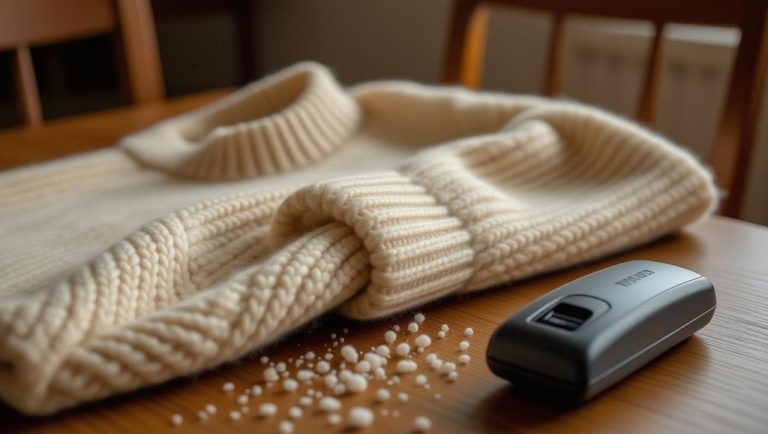What is dry cleaning and why is it important?
Dry cleaning is a process that uses chemical solvents instead of water to clean clothes. It’s particularly important for garments labeled as “dry-clean only” because these items can be damaged by traditional washing methods. These clothes often include delicate fabrics like silk, wool, and cashmere, which can shrink, lose shape, or get damaged when exposed to water or the agitation of a washing machine. Dry cleaning helps maintain the quality and longevity of these special pieces in your wardrobe.
Dry cleaning also plays a crucial role in removing stains that are difficult to tackle with regular laundry methods. It’s not just about cleanliness; it’s about preserving the fabric and the overall appearance of your clothing. By opting for dry cleaning, you ensure that your favorite garments continue to look their best, maintaining their color, texture, and shape over time.

In today’s world, where sustainability and cost-effectiveness are more important than ever, understanding how to dry clean at home can be a game-changer. Not only does it save money, but it also reduces the environmental impact of traditional dry cleaning methods, which often use harsh chemicals. So, let’s delve into how you can bring the dry cleaning process into your home and keep your wardrobe fresh and vibrant.
Benefits of dry cleaning at home
One of the most significant benefits of dry cleaning at home is the convenience it offers. You no longer need to make trips to the dry cleaner, saving you time and effort. This can be particularly beneficial if you have a busy schedule or if the nearest dry cleaner is far away. Additionally, you have complete control over the cleaning process, allowing you to treat your clothes with the care they deserve.
Another advantage is the cost savings. Over time, the expenses of professional dry cleaning can add up, especially if you have a lot of dry-clean-only garments. By learning to dry clean at home, you can significantly reduce these costs. You’ll also have the satisfaction of knowing exactly what goes into the cleaning process, which can be reassuring if you’re concerned about the use of harsh chemicals.
Lastly, home dry cleaning can be more environmentally friendly. Traditional dry cleaning often uses perchloroethylene, a chemical that can harm the environment. By using natural alternatives like vinegar and baking soda, you can minimize your ecological footprint. Plus, you’ll avoid the plastic wrapping that comes with professionally dry-cleaned clothes, further reducing waste.
Tools and materials needed for home dry cleaning
To get started with dry cleaning at home, you’ll need a few essential tools and materials. First, you’ll need distilled white vinegar, which is a versatile and gentle cleaning agent. Baking soda is another must-have, as it’s excellent for absorbing odors and tackling stains. A clean microfiber cloth will be your go-to for applying solutions and blotting stains.
A well-ventilated area is crucial for the drying process, so consider doing your dry cleaning outdoors on a sunny day or in a breezy room. A garment bag will help protect your clothes during and after the cleaning process. If you opt for a home dry cleaning kit, make sure to follow the instructions provided, as these kits often come with specific tools and solutions.
Lastly, a handheld garment steamer can be a valuable tool for removing wrinkles and refreshing your clothes. While not essential, it can make a big difference in the final appearance of your garments. With these tools and materials in hand, you’re ready to start dry cleaning at home.
Step-by-step guide to dry cleaning at home
Preparing your clothes for dry cleaning
Before you begin the dry cleaning process, it’s important to prepare your clothes properly. Start by checking the care label to ensure the garment is suitable for home dry cleaning. If it’s labeled “dry-clean only,” you’re good to go. Next, remove any loose dirt or debris from the clothing by gently brushing it off with a soft-bristle brush.
If there are any visible stains, it’s best to treat them before proceeding with the dry cleaning process. Use a mixture of equal parts white vinegar and water to gently blot the stain, working from the outside in. Allow the area to air dry before moving forward. Once your clothes are prepped, hang them in a well-ventilated area to begin the dry cleaning process.
Using a home dry cleaning kit
If you’re using a home dry cleaning kit, follow the instructions provided with the kit. Typically, these kits include a special bag and cleaning solution. Place your garment in the bag, add the solution, and seal it according to the kit’s instructions. Then, place the bag in the dryer and run it on a low heat setting for the recommended time.
After the cycle is complete, remove the garment from the bag and hang it in a well-ventilated area to air out. This step is crucial for removing any remaining odors and allowing the garment to dry completely. Once dry, your clothes should be fresh and clean, ready to wear or store.
Applying the dry cleaning solution
If you’re not using a kit, you can create your own dry cleaning solution using household items. Start by hanging your garment in a well-ventilated area. Sprinkle a thin layer of baking soda over the garment to help absorb odors. Leave it to air out for a few hours or overnight.
Once the baking soda has done its job, shake or brush it off the garment. Next, use a handheld garment steamer to gently steam the entire garment. Be careful not to get the fabric too wet, as excessive moisture can damage some dry-clean-only fabrics. This step will help remove wrinkles and refresh the garment.
Drying and finishing your clothes
After steaming, allow the garment to air dry in a well-ventilated area. Once it’s completely dry, you can store it in a garment bag or plastic bag to protect it from dust and odors. If you notice any remaining wrinkles, you can use a low-heat iron or steamer to smooth them out.
Finally, give your garment a once-over to ensure it’s clean and fresh. If you’re satisfied with the results, you can wear it or store it for future use. With these steps, you can successfully dry clean your clothes at home, saving time and money while caring for your wardrobe.

Common mistakes to avoid when dry cleaning at home
One common mistake when dry cleaning at home is using too much moisture. Excessive moisture can damage delicate fabrics, so it’s essential to use a light touch when steaming or spot cleaning. Another mistake is not allowing enough time for the garment to air out and dry completely. Rushing this process can leave your clothes damp and prone to mold or mildew.
Another error to avoid is using the wrong cleaning agents. Some chemicals can be too harsh for delicate fabrics, so stick to gentle, natural solutions like vinegar and baking soda. Finally, don’t skip the pre-treatment step for stains. Ignoring stains can lead to them setting in and becoming more difficult to remove later.
By being mindful of these common mistakes, you can ensure a successful home dry cleaning experience and keep your clothes in top condition.
How to care for different types of fabrics during dry cleaning
Dry cleaning cotton and linen
Cotton and linen are relatively forgiving fabrics when it comes to home dry cleaning. Start by spot cleaning any stains with a vinegar and water solution, then allow the area to air dry. Once the stains are treated, you can use a home dry cleaning kit or the baking soda and steaming method described earlier.
When steaming cotton and linen, be sure to use a low heat setting to avoid damaging the fabric. After steaming, hang the garments in a well-ventilated area to dry completely. Once dry, you can iron them on a low heat setting if necessary. With proper care, your cotton and linen garments will stay fresh and clean.
Dry cleaning silk and satin
Silk and satin are more delicate fabrics that require extra care during the dry cleaning process. Start by spot cleaning any stains with a gentle solution of vinegar and water. Be sure to test the solution on an inconspicuous area first to ensure it doesn’t damage the fabric.
When steaming silk and satin, use a very low heat setting and keep the steamer at a distance to avoid direct contact with the fabric. After steaming, hang the garments in a well-ventilated area to dry completely. Avoid using an iron on silk and satin, as it can cause damage. Instead, use a steamer or hang the garments in a steamy bathroom to remove wrinkles.
Dry cleaning wool and cashmere
Wool and cashmere are luxurious fabrics that require special attention during dry cleaning. Start by spot cleaning any stains with a gentle solution of vinegar and water. Be sure to test the solution on an inconspicuous area first to ensure it doesn’t damage the fabric.
When steaming wool and cashmere, use a low heat setting and keep the steamer at a distance to avoid direct contact with the fabric. After steaming, hang the garments in a well-ventilated area to dry completely. Avoid using an iron on wool and cashmere, as it can cause damage. Instead, use a steamer or hang the garments in a steamy bathroom to remove wrinkles.
Tips for maintaining the quality of your clothes after dry cleaning
After dry cleaning your clothes at home, it’s important to take steps to maintain their quality. One key tip is to store your garments in a cool, dry place to prevent mold and mildew. Use garment bags to protect your clothes from dust and odors, and avoid hanging them in direct sunlight, which can cause fading.
Another tip is to rotate your wardrobe regularly. By giving your clothes a break between wears, you can extend their lifespan and keep them looking fresh. If you notice any stains or odors after wearing a garment, treat them immediately to prevent them from setting in.
Finally, consider using natural fabric fresheners like lavender sachets or cedar blocks to keep your clothes smelling fresh. These natural options are gentler on fabrics than chemical sprays and can help maintain the quality of your wardrobe over time.
When to seek professional dry cleaning services
While home dry cleaning can be effective for many garments, there are times when professional services are necessary. If you have leather or suede items, it’s best to take them to a professional cleaner who specializes in these materials. The same goes for fur coats and accessories, which require specialized care to maintain their texture and appearance.
Wedding dresses and other formalwear with intricate details like lace and beadwork should also be professionally cleaned. These items are often made of delicate fabrics that can be easily damaged by home cleaning methods. Additionally, if you have valuable or antique clothing, it’s best to consult a professional to ensure proper care and preservation.
Finally, if you have heavily stained clothing or garments that aren’t colorfast, it’s best to leave them to the professionals. They have the tools and expertise to remove set-in stains and prevent color damage. By knowing when to seek professional help, you can ensure your clothes receive the best care possible.
Conclusion: Enjoying fresh and clean clothes with home dry cleaning
In conclusion, learning how to dry clean at home can be a rewarding experience. Not only does it save you time and money, but it also allows you to care for your clothes with the attention they deserve. By following the steps and tips outlined in this guide, you can keep your favorite garments looking their best without ever leaving your house.
Remember, the key to successful home dry cleaning is to be gentle and patient. Use natural cleaning agents like vinegar and baking soda, and always allow your clothes to air out and dry completely. With a little practice, you’ll be able to enjoy fresh and clean clothes straight from the comfort of your own home.
So, give home dry cleaning a try and see the difference it can make in your wardrobe. Your clothes will thank you, and you’ll appreciate the convenience and cost savings. Happy cleaning!
Read more Closet organization hacks that will change your life














